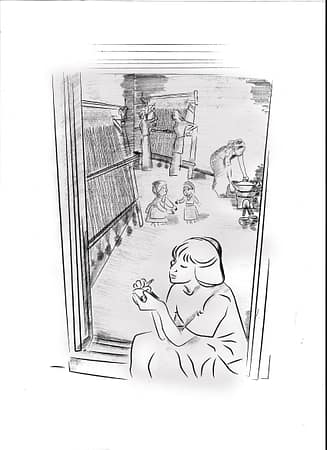
Figurines book is the story of how I researched a collection of ancient figurines from the site of Tell Ahmar in North Syria.
It’s a book for those interested in archaeology and how people used figurines in their daily lives.
Many archaeologists over the decades have believed that figurines are religious in meaning, especially related to a mother-goddess cult and may be objects of worship used in rituals.
I wasn’t so sure.
Figurines are found over a wide area from thousands of years ago and they all look different. How can they all mean the same thing?
I started by looking at the figurines. I studied them in the workroom of the dig compound at Tell Ahmar, then at the Aleppo Museum and finally at the Ashmolean and British Museums in England.
Then I thought about where they were found, their findspot or context. Some were found in burials, other in domestic locations. At Tell Ahmar, they were found in rooms where there was strong evidence for textile manufacture.
The figurines looked like small people, standing human figurines, and also horses, some of which were ridden. I used other archaeological evidence including other objects, the sculptures of the Neo-Assyrian Kings and images of people weaving to determine that the figurines were made and used by people who were involved with weaving but who were familiar with horse mounted cavalry.
Using all avenues of evidence, I concluded that they were made by women who wove on an industrial scale in the house of a wealthy businessman whose clay tablet archive we found and who made them, possibly as toys for their young children, but the difference with my research was that I asked ‘who’ made them, and not just ‘why’. Using a body of theory relevant to the social and historical context of the figurines, I come up with a much more interesting story than that of a fertility cult!

'Ancient figurines' is the working title of the second edition of my book about the Iron Age figurines from the Upper Euphrates Valley, North Syria.